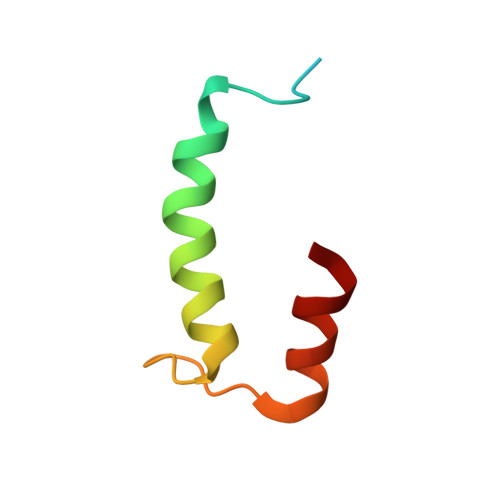Structural analysis of Red1 as a conserved scaffold of the RNA-targeting MTREC/PAXT complex.
Foucher, A.E., Touat-Todeschini, L., Juarez-Martinez, A.B., Rakitch, A., Laroussi, H., Karczewski, C., Acajjaoui, S., Soler-Lopez, M., Cusack, S., Mackereth, C.D., Verdel, A., Kadlec, J.(2022) Nat Commun 13: 4969-4969
- PubMed: 36002457
- DOI: https://doi.org/10.1038/s41467-022-32542-3
- Primary Citation of Related Structures:
7QUU, 7QY5 - PubMed Abstract:
To eliminate specific or aberrant transcripts, eukaryotes use nuclear RNA-targeting complexes that deliver them to the exosome for degradation. S. pombe MTREC, and its human counterpart PAXT, are key players in this mechanism but inner workings of these complexes are not understood in sufficient detail. Here, we present an NMR structure of an MTREC scaffold protein Red1 helix-turn-helix domain bound to the Iss10 N-terminus and show this interaction is required for proper cellular growth and meiotic mRNA degradation. We also report a crystal structure of a Red1-Ars2 complex explaining mutually exclusive interactions of hARS2 with various ED/EGEI/L motif-possessing RNA regulators, including hZFC3H1 of PAXT, hFLASH or hNCBP3. Finally, we show that both Red1 and hZFC3H1 homo-dimerize via their coiled-coil regions indicating that MTREC and PAXT likely function as dimers. Our results, combining structures of three Red1 interfaces with in vivo studies, provide mechanistic insights into conserved features of MTREC/PAXT architecture.
Organizational Affiliation:
Univ. Grenoble Alpes, CNRS, CEA, IBS, F-38000, Grenoble, France.















